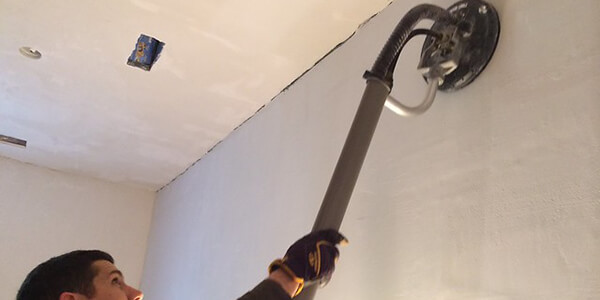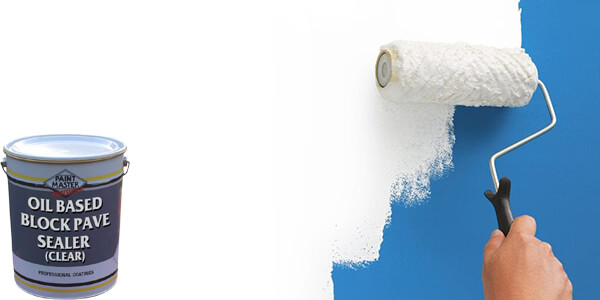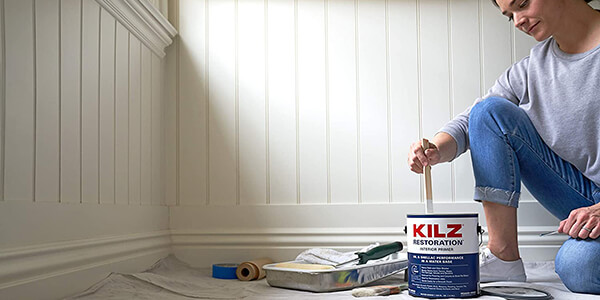Oil Based Primer Over Latex Paint: 4 Things to Consider
Primers are the savior for materials that come with sensitive issues. It’s because primer increases the adhesive ability of the surface where you tend to paint. Among many types of primers, oil-based primers are the one that comes with the highest ability to prepare both interior and exterior surface for the paint. Latex paint, as water-based paint, comes with a great sense of convenience.
It’s great if you use latex paint on any material-based surfaces including wood, metal, ceramic, and so on. But many people or DIYers are interested to know if using an oil based primer over latex paint would be a rational thing to do or not. This question arises because latex paint is so good to use and when you seal the paint with a primer then the paint looks more vivid and crystal clear.

Therefore, it’s good when you prime a painting. And, in the case of latex paint, you can surely apply oil-based primer over it. Besides, you can do the vice versa thing. Let’s have a clean conversation on that.
Table of Contents:=>
Can You Use Oil Based Primer Over Latex Paint?
An oil-based primer is never a bad option as it assures the paint of great support. Among different types of primers, they all have got their own facilities and benefits differently. Likewise, latex paint can definitely stand oil-based primer over it. But before that, you need to accomplish some basics like sanding the paint properly. Sanding makes the surface even and the extra latex paint will be removed as well. Read Also: 7 Best Clear Coat Over Latex Paint 2021 [Reviews & Buying Guide]
Using oil-based primer after sanding latex paint is the coolest and wisest idea ever. Besides, the primer will help in sealing the gauges and cracks of latex paint as well. Thus it prepares the surface for the best outcome. You can use other types of paints after you finish priming your latex paint as well. The most interesting fact is that you can apply latex paint over oil-based primers as well.
The only thing you need to take care of is to let the primer dry properly at first. However, it’s a normal fact that oil-based primers will take more time than any water-based primers. It almost takes a day for the oil-based primer to be cured fully and properly. Besides the toxic fumes, it emits are not quite a pleasing thing. Also, the primer is messy to deal with. Read Also: 7 Best Paint for Styrofoam & Foam Board: 2021 Reviews.
Because of these major issues, many people now try to avoid oil-based primers and adopt other water-based primers. But for professionals, oil-based primer is still great as it assures durability and efficiency. And for latex paint, it makes the paint more resilient and vivid. The fruitful result of using an oil-based primer over latex is always enchanting. Therefore, it is totally okay if you want to use an oil-based primer.
4 Things to Consider When Putting Oil-Based Paint Over Latex:
Oil-based paints are already a tough deal to make. But this type of paint has great stability therefore many people wonder if they are allowed to use oil-based paint over latex. Latex and oil-based paint don’t have a piece-of-cake type of relationship. If you want to apply an oil-based paint over latex, the surface might get messy over time.
A direct approach with oil-based paint over a surface where there is latex would be a very imprudent idea. Though it’s tough to build a firm relationship between oil-based paint over latex, it’s not entirely an impossible task.
However, you need to take care of a few things to get these two elements together to get a whole new experiment. If you solely consider the following basic things before applying oil-based paint over latex, then there is less chance that your paint will get cracked or split.
1. Sanding the Latex Paint:

Sanding is the most important part if you want oil-based paint to get along with latex. As latex has a characteristic of stretching, you need to sand the extra latex from the paint. Otherwise, it will create a whole mess before you even get started with oil-based paint. To make it more professional, you cannot skip sanding latex. If it’s a surface-like wall, then use P80-P150 grit sandpaper.
This sandpaper will make the surface smooth and even. Also, for a perfect and seamless result, the usefulness of the sandpaper is inexpressible. Besides, this process of sanding latex also prepares the surface for a firm coating by removing flaking areas. You might need to sand latex twice or more. And after sanding it, do not forget to remove the dust from it.
2. Use an Oil-based Sealer:

It happens so many times that after sanding latex paint, some spaces start to come out. If the paint starts to come out then sealing is necessary at that very moment. To fix the places from where the latex paint is coming out, you can use an oil-based sealer. A sealer always provides immense support to hold the business properly.
And to protect latex paint, an oil-based sealer is a perfect choice. It offers undividable firmness to the paint and helps it remain on its spot. Besides, it allows a shiny and semi-glossy finish. This sealer definitely gives an isolated space above latex paint. Thus, it makes the latex ready to have oil-based paint over it as well.
3. Apply a Good Primer:

As it is quite a bad idea to pour oil-based paint over latex without even taking good preparation, you should definitely consider prime your latex at first. A quality primer makes your latex surface ready for the next steps. However, in choosing a primer, you must choose the water-based one. There are several benefits if you choose water-based or acrylic primer to prime your latex.
Also, water-based primers can easily get along with both oil-based and water-based paint. Acrylic primer is also water-based and great for both latex and oil-based paint. This primer creates a fine line so that you can apply oil-based paint or any paint over latex. You might need to have a second or third coat to get a properly isolated area over latex.
Also, you need to wait till the coatings dry completely before applying any other paints. For your information, an oil-based primer will also go well but using the water-based one is a top-notch idea.
4. Use Waterborne Alkyds to Avoid Shrinking:

Latex paint is convenient because it doesn’t create any mess like oil-based paint. Though oil-based paint can stand more roughness and fragility, it is used on many outdoor as well as indoor surfaces. But this paint does not have the characteristic to stretch like acrylic or latex paint. Oil-based paint tends to shrink in the places where it is applied.
This problem mostly occurs when you apply the paint outside. Because of the weather fluctuation and other unnecessary weather demands, this paint starts to crack and peel off from the surface. But you will face the problem less if you apply it indoors. However, to get rid of this shrinking problem, use waterborne alkyds. It will help oil-based paint stretch and prevent the paint from cracking.
These basic things are the helpers of an effective result. Therefore, we would recommend you consider these important points while applying.
FAQs:
Question: What happens if you paint latex over oil?
Answer: Applying latex over oil directly will not bring a satisfactory result at all. You’ll end up getting a surface full of cracks and odd-looking signs. This is because oil paint doesn’t provide the adhesive that latex paint requires. If you really want latex to sit on oil, then you need to prepare the surface for the topcoat. And for this, you’ll need to have a latex conversion primer.
This primer is specially manufactured so it can get along with other types of paints. However, sanding is important before applying the primer. Otherwise, you’ll get an uneven surface. Also, let the primer soak and then dry properly. This way you can have latex over oil easily.
Question: Can I use oil-based primer over water-based paint?
Answer: Though it’s a messy process, it’s not an impossible task to use oil-based primer over water-based paint. Water-based paints are always recommendable because of their low VOCs and fast-drying formula. Once the water-based paint is dry, you are totally good to go with your oil-based primer.
As primers are used to seal cracks and crevices and to enhance the vividness of the painting, it’s totally worth it if you use primer over paint. Besides, when the primer will be dried, you will be able to apply any water or oil-based paint over it as well. The only pain you have to go through during the process is that oil-based primer will take a hell of a time to dry.
Question: Will oil-based paint stick to latex?
Answer: Latex has a very resilient characteristic. You cannot have the adhesion no matter what paint you are trying to impose on it. Therefore, oil-based paint will also not stick to latex unless you prepare it for the job particularly. You’ll not get the adhesive power of latex so easily. As it comes with the nature of stretching, you need to first remove the excess of the paint.
And for this, you need to sand latex to make it even and seamless. To sand it properly you need to choose the right grit sandpaper. Usually, 120 to 150-grit sandpaper works better to even latex paint on hard surfaces.
Question: Can I apply oil paint over latex paint on a garage floor?
Answer: You can use oil paint on a garage floor, as it lasts long and provides a strong balance. Besides, it tackles the damp and fluctuating weather outside. However, if your garage is painted with latex before, you apply oil paint over it. But the result will be futile if you don’t prepare the floor beforehand.
Besides, oil painting the garage floor can be hard labor. Besides, it requires a tight coating. To make the latex paint prepare for the oil paint, you need to prime it very well. The priming should be thick and even. Also, it should be dried completely by applying oil paint over it.
Question: What are the steps and preparation needed to paint over oil-based paint with latex paint?
Answer: To paint over oil-based paint with latex paint, you need to first sand the surface in the correct way with the right grit sandpaper. After that, you need to clean the surface with detergent. Then you have to use a primer to prime the surface.
Next, you need to wait for the primer to dry properly and recoat the surface again with the same primer until you think the surface is strong enough to stand any type of topcoat. However, latex paint gets along with all types of weather, therefore, it is the most recommendable paint.
can you apply Shellac primer over latex paint?
Applying Shellac primer over latex paint is generally not recommended. Shellac primers are alcohol-based and have a different chemical composition compared to latex paint, which is water-based.
Mixing these two types of coatings can lead to poor adhesion, blistering, and other issues with the paint finish.
It’s advisable to use a primer that is compatible with latex paint, such as a water-based latex primer, to ensure proper adhesion and a smooth, long-lasting finish.
If you need to switch from latex to Shellac-based coatings, it’s typically best to strip or sand the latex paint down to the substrate before applying the Shellac primer for the best results.
Last Updated on September 29, 2023 by Rogers Weber
[As an Amazon Associate I earn from qualifying purchases.]


